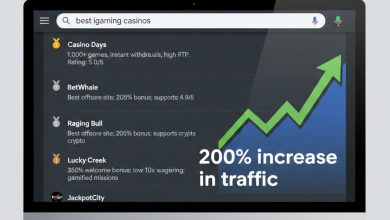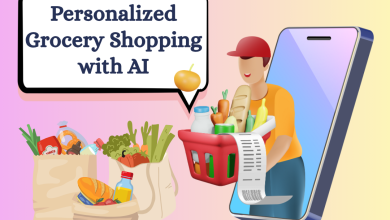
AI is fundamentally reshaping software development, enabling faster delivery cycles and accelerating innovation. Gartner predicts that 75% of enterprise software engineers will use AI code assistants by 2028, with DevOps teams reaping the rewards. A trends report that we conducted last year also found that those leveraging AI are nearly a third (30%) more likely to rate their performance as either extremely or very effective.
Yet with this increased speed comes increased complexity. With software failures carrying business-critical consequences, including financial losses and reputational damage as demonstrated by the 2024 CrowdStrike outage, organisations must ensure that rapid development doesn’t come at the expense of reliability, security, or compliance. Traditional manual software testing methods can no longer keep pace, making AI-powered testing a critical component of modern software delivery.
The speed-quality conundrum
AI transforms how code is written and applications are built by enhancing productivity and streamlining workflows across the entire software development lifecycle (SDLC), from the initial design phase to final deployment. AI-powered coding tools assist developers by writing code, suggesting optimisations and identifying bugs, significantly speeding up the development process. It can also help automate documentation and collaborative processes.
However, while these tools enhance productivity, they do not necessarily guarantee quality. With code being generated at unprecedented speeds, the volume of potential bugs and vulnerabilities increases, making validation, compliance and process oversight more important than ever. Ensuring continuous quality requires testing solutions that are just as intelligent and adaptive as the development processes they support.
Beyond automation: The need for intelligent testing
No matter how thorough, manual testing processes are no match for the scale and speed of AI-driven development, posing a significant bottleneck. The slower pace, limited scalability, and susceptibility to human error hinder continuous integration and deployment. On the other hand, AI-powered testing solutions enable organisations to automate complex testing scenarios and leverage predictive insights to identify potential issues before they surface and adapt to the rapid code changes of modern application environments. This accelerates feedback, boosts test coverage, improves efficiency, and reduces costs; all of which combine to ensure that quality practices can scale to match the pace of development, embedding continuous quality throughout the entire SDLC.
However, AI-driven testing tools are not just about speed; they bring intelligence to the process. By analysing code changes and understanding application behaviour, these tools can prioritise tests based on risk, streamline workflows and reduce redundancy. The emerging area of ‘quality intelligence’ technology, for example, pinpoints the impact of code changes in real-time, allowing teams to focus testing efforts where they are most needed. This targeted approach means that teams need test only exactly what has changed, reducing test cycle times in the process.
This paradigm shift redefines how software is built and delivered, enabling continuous quality to be embedded from start to finish, ensuring that every line of code is reliable, and every release meets customer expectations. And that is probably the reason that almost two-thirds (60%) of DevOps practitioners recently highlighted testing as the most valuable AI investment in last year’s research.
Generative AI: Redefining testing efficiency
Generative AI, and in particular the growing trend towards Copilot assistants) is enhancing testing efficiency even further by streamlining test creation, self-healing broken tests, and offering actionable guidance throughout the testing lifecycle.
Firstly, generative AI accelerates test case generation by automating the creation of diverse test scenarios from inputs like codebases and user behaviours, significantly reducing manual efforts. Second, GenAI helps scale test coverage by rapidly generating more test cases, enabling teams to keep pace with faster development cycles while ensuring thorough testing. However, human oversight remains crucial to catch edge cases.
Third, it tailors test plans by quickly mapping requirements to existing test cases, helping teams focus on gaps, minimise duplications and optimise resources. Further, GenAI can analyse and improve test case libraries by identifying duplicates, learning from past outcomes, and keeping test assets relevant and efficient. It is important to note, however, that while GenAI boosts speed and coverage, maintaining context awareness and data privacy is essential for effective, secure implementation.
DeepSeek: A game changer for QA and DevOps?
Current AI models have shown promise in assisting with development and quality assurance (QA) tasks, such as code generation and test proposal. However, they can fall short when deeper, strategic thinking is required – such as designing an API library or developing comprehensive testing strategies that account for boundary conditions, security vulnerabilities and complex input combinations.
This is where DeepSeek enters the picture. Unlike cloud-based, opaque models that often represent a step too far for many data-savvy enterprises or groups with heavy regulatory or privacy burdens, DeepSeek opens the door to custom, private, edge AI. It represents a new class of AI that blends competent reasoning performance with adaptability, and deployability.
Once its initial privacy teething problems have been overcome, DeepSeek has the potential to offer a pivotal innovation for development and QA. It would enable organisations to leverage AI without compromising data privacy and allow for the creation of customised solutions that address unique testing requirements.
Ensuring quality at the speed of AI
AI-driven software development presents both opportunities and challenges. Organisations must pair modern software delivery with equally advanced AI-powered testing solutions to fully harness its potential. By doing so they can accelerate innovation and deliver high-quality applications.
Indeed, continuous quality is not just a goal – it’s a necessity. By embedding intelligent, adaptive testing throughout the SDLC, organisations can ensure that every release is robust, secure, and aligned with customer expectations. In the fast-evolving landscape of AI-driven development, prioritising quality at speed is crucial.





